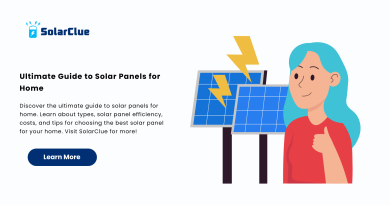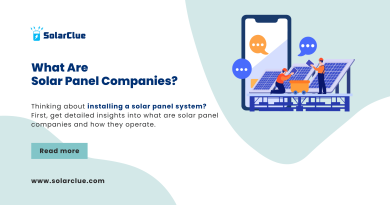how to connect solar panel to inverter
Connecting solar panels to an inverter is a critical step in harnessing solar energy for use in homes, businesses, or off-grid setups. The process involves several components, including solar panels, charge controllers, and inverters. This guide will cover everything you need to know, from understanding the role of each component to wiring and optimizing your system.
Table of Contents
- 1 Understanding the Role of a Charge Controller in Solar Systems
- 2 Choosing the Right Charge Controller for Your Setup
- 3 Wiring Diagrams and Connection Procedures
- 4 Safety Precautions When Working with Electricity
- 5 Optimizing System Performance for Maximum Energy Output
- 6 Troubleshooting Common Connection Problems
- 7 Limitations of Using a Normal Inverter with Solar Panels
- 8 The Benefits of Upgrading to a Solar Inverter
- 9 The Impact of Inverter Efficiency on System Performance
- 10 The Role of Battery Storage in System Design and Operation
- 11 Government Regulations and Safety Standards for Solar Panel Installations
- 12 Case Studies of Successful Solar Panel Installations
- 13 Table: Comparing PWM and MPPT Charge Controllers
- 14 FAQs
- 15 Conclusion
Understanding the Role of a Charge Controller in Solar Systems
Charge Controller: A charge controller is a device that regulates the voltage and current coming from the solar panels before it is stored in the battery or sent to the inverter. Its primary function is to prevent overcharging of the batteries, which can damage them and reduce their lifespan.
- Preventing Overcharging: It stops charging the battery when it reaches its maximum voltage, preventing damage.
- Maintaining Battery Health: It ensures the battery is charged at the correct voltage and current levels.
- Load Management: Some charge controllers can also manage the load directly from the battery, providing additional protection and functionality.
Choosing the Right Charge Controller for Your Setup
There are two main types of charge controllers, each suitable for different types of solar systems:
- PWM (Pulse Width Modulation) Charge Controllers:
- Operation: PWM controllers work by gradually reducing the amount of power going into the battery as it approaches full charge, ensuring that the battery is not overcharged.
- Suitability: Ideal for smaller systems where the difference between the panel’s voltage and the battery voltage is not significant.
- Cost: More affordable, but less efficient than MPPT controllers.
- MPPT (Maximum Power Point Tracking) Charge Controllers:
- Operation: MPPT controllers adjust the input voltage from the solar panels to extract the maximum power possible, regardless of the battery’s voltage.
- Suitability: Best for larger systems or where there is a significant difference between the panel’s voltage and the battery voltage.
- Cost: More expensive but offers higher efficiency and better performance, especially in varying light conditions.
Wiring Diagrams and Connection Procedures
1. Wiring Solar Panels to the Charge Controller:
- Series Connection: Connect the positive terminal of one panel to the negative terminal of the next. This increases the system voltage but keeps the current the same.
- Parallel Connection: Connect all positive terminals together and all negative terminals together. This keeps the voltage the same but increases the current.
2. Connecting the Charge Controller to the Battery:
- Positive Wire: Connect the positive terminal of the charge controller to the positive terminal of the battery.
- Negative Wire: Connect the negative terminal of the charge controller to the negative terminal of the battery.
3. Connecting the Battery to the Inverter:
- Positive Wire: Connect the positive terminal of the battery to the positive terminal of the inverter.
- Negative Wire: Connect the negative terminal of the battery to the negative terminal of the inverter.
4. Connecting the Inverter to the Load:
- AC Output: Connect the AC output of the inverter to your household or business appliances, ensuring that the load does not exceed the inverter’s capacity.
Safety Precautions When Working with Electricity
- Disconnect Power: Always disconnect the battery and solar panels before making any connections to prevent electric shock.
- Use Proper Insulation: Ensure all wires are properly insulated to prevent short circuits.
- Grounding: Properly ground the solar system to reduce the risk of electric shock and protect against lightning strikes.
- Install Fuses: Use fuses or circuit breakers between the panels, charge controller, battery, and inverter to protect against electrical faults.
- Follow Manufacturer Instructions: Adhere to all guidelines provided by manufacturers for each component.
Optimizing System Performance for Maximum Energy Output
- Panel Placement: Ensure solar panels are placed in an area with maximum sun exposure, with minimal shading.
- Use MPPT Charge Controllers: If your system is large or you experience varying sunlight conditions, use MPPT controllers for higher efficiency.
- Regular Maintenance: Keep panels clean, check wiring connections, and ensure the charge controller and inverter are functioning correctly.
- Monitor System Performance: Use monitoring tools to track energy production and identify any potential issues.
Troubleshooting Common Connection Problems
- Low Battery Voltage:
- Cause: Panels not producing enough power or the charge controller not functioning correctly.
- Solution: Check panel connections, clean panels, and ensure the charge controller is working.
- Inverter Not Powering On:
- Cause: Battery voltage might be too low, or the inverter is not properly connected.
- Solution: Check battery voltage and ensure all connections to the inverter are secure.
- Overheating of Components:
- Cause: Overloading the system or poor ventilation.
- Solution: Ensure components are not overloaded and provide adequate ventilation.
Limitations of Using a Normal Inverter with Solar Panels
- Efficiency: Regular inverters are not designed to handle the varying input from solar panels efficiently, leading to energy loss.
- Battery Dependency: Normal inverters often rely entirely on battery power and may not optimize energy usage from solar panels directly.
- No Direct Solar Input: Many normal inverters cannot directly accept power from solar panels without a battery in between.
The Benefits of Upgrading to a Solar Inverter
- Direct Solar Input: Solar inverters can directly convert DC power from solar panels to AC power for immediate use.
- Higher Efficiency: Designed to work with the varying input from solar panels, solar inverters offer better efficiency.
- Grid Interaction: Solar inverters often include features like net metering, allowing you to feed excess power back into the grid.
The Impact of Inverter Efficiency on System Performance
- Higher Efficiency Equals More Savings: An efficient inverter ensures that the maximum possible energy from the solar panels is converted and used, reducing reliance on the grid and saving on electricity bills.
- Long-Term Durability: High-efficiency inverters tend to operate cooler and last longer, ensuring better ROI on your solar investment.
The Role of Battery Storage in System Design and Operation
Battery Storage: Batteries store excess energy produced by the solar panels for use during nighttime or cloudy days.
- Energy Independence: Batteries provide backup power, reducing reliance on the grid.
- Load Management: Batteries allow for better load management, ensuring that critical appliances have power even during outages.
- Cost Savings: By storing excess power, batteries help to maximize the usage of solar energy, reducing overall electricity costs.
Government Regulations and Safety Standards for Solar Panel Installations
- Compliance: Ensure your installation complies with local regulations and safety standards, such as those set by the Ministry of New and Renewable Energy (MNRE) in India.
- Certification: Use certified components (e.g., BIS-certified panels and inverters) to ensure safety and performance.
- Professional Installation: For larger systems, consider hiring a professional installer to ensure compliance and safety.
Case Studies of Successful Solar Panel Installations
Case Study 1: Residential Solar System in Delhi
- Setup: 5 kW solar system with MPPT charge controller and solar inverter.
- Outcome: The system significantly reduced electricity bills, with excess power fed back into the grid via net metering.
Case Study 2: Off-Grid Solar System in Rural Maharashtra
- Setup: 3 kW solar system with battery storage and PWM charge controller.
- Outcome: Provided reliable power for a rural home, reducing dependency on diesel generators.
Table: Comparing PWM and MPPT Charge Controllers
| Feature | PWM Charge Controller | MPPT Charge Controller |
|---|---|---|
| Efficiency | 75-80% | 95-98% |
| Cost | Lower | Higher |
| Best Use Case | Small systems, close voltage match | Larger systems, varying light conditions |
| Performance in Low Light | Poor | Excellent |
| Heat Generation | Higher | Lower |
FAQs
1. Why do I need a charge controller in my solar system?
- A charge controller regulates the voltage and current from the solar panels to prevent overcharging the batteries, ensuring their longevity and safety.
2. Can I connect solar panels directly to an inverter?
- No, solar panels should be connected to a charge controller before the inverter to manage power flow and protect the battery bank.
3. What is the difference between PWM and MPPT charge controllers?
- PWM controllers are less efficient and suitable for small systems, while MPPT controllers offer higher efficiency and are better for larger systems.
4. How can I maximize the efficiency of my solar system?
- Optimize panel placement, use MPPT charge controllers, monitor performance regularly, and ensure all connections are secure and insulated.
5. What are the safety precautions when connecting solar panels to an inverter?
- Always disconnect power before working, use proper insulation, ground the system, install fuses, and follow manufacturer instructions for each component.
Conclusion
Connecting solar panels to an inverter involves careful planning, proper wiring, and the use of essential components like charge controllers. By understanding the role of each component and following safety precautions, you can optimize your solar system’s performance and enjoy reliable, renewable energy. Whether you’re setting up a small off-grid system or a larger grid-tied installation, this guide provides the knowledge you need to make informed decisions and maximize your solar investment.



